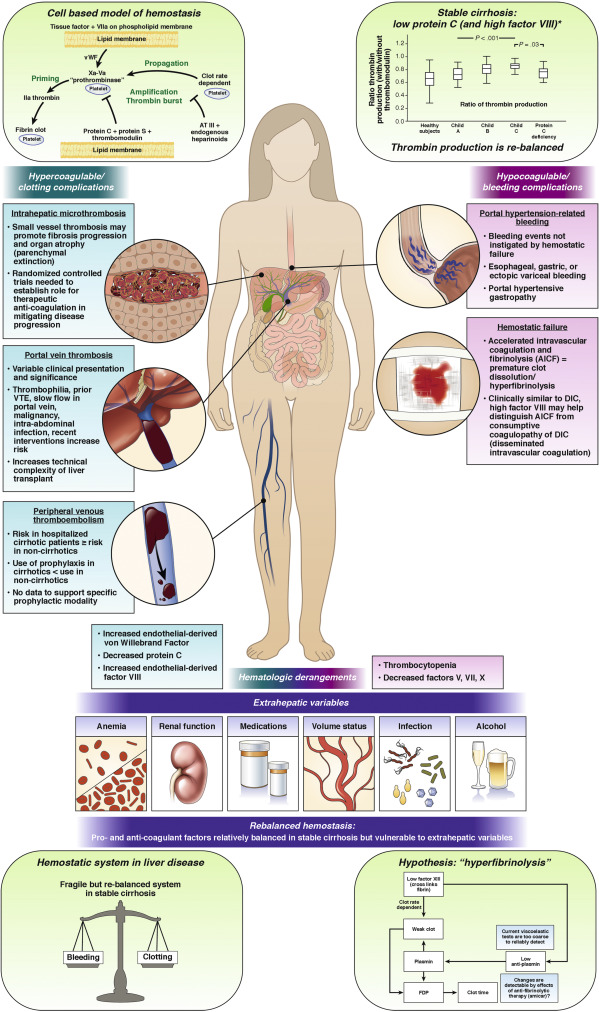1. Global tests of clot formation, such as rotational thromboelastometry, thromboelastography, sonorheometry and thrombin generation, may eventually have a role in the evaluation of clotting in patients with cirrhosis, but currently lack validated target levels.
2. In general, clinicians should not routinely correct thrombocytopenia and coagulopathy before low-risk therapeutic paracentesis, thoracentesis and routine upper endoscopy for variceal ligation in patients with hepatic synthetic dysfunction-induced coagulation abnormalities.
3. Blood products should be used sparingly because they increase portal pressure and carry a risk of transfusion-associated circulatory overload, transfusion-related acute lung injury, infection transmission, alloimmunization and/or transfusion reactions.
4. The following transfusion thresholds for management of active bleeding or high-risk procedures may optimize clot formation in advanced liver disease: hematocrit ≥25%, platelet count >50,000 and fibrinogen >120 mg/dL. Commonly utilized thresholds for international normalized ratio correction are not supported by evidence.
5. Thrombopoietin agonists are a good alternative to platelet transfusion, but require time (about 10 days) to elevate platelet levels.
6. The large volume of fresh frozen plasma required to reach an arbitrary international normalized ratio target, limitations of the usual target, minimal effect on thrombin generation, and adverse effects on portal pressure limit the utility of this agent significantly.
7. The four-factor prothrombin complex concentrate contains both pro- and anticoagulant factors that offer an attractive low-volume therapeutic to rebalance a disturbed hemostatic system. However, dosage is, in part, based on international normalized ratio, which is problematic in cirrhosis, and published experience in liver disease is limited.
8. Anti-fibrinolytic therapy may be considered in patients with persistent bleeding from mucosal oozing or puncture wound bleeding consistent with impaired clot integrity. Both ε-aminocaproic acid and tranexamic acid inhibit clot dissolution. Neither is believed to generate a hypercoagulable state, although both may exacerbate pre-existing thrombi.
9. Desmopressin releases von Willebrand factor as its primary hemostatic mechanism. As this factor is usually elevated in cirrhosis, the agent lacks a sound evidence-based foundation, but may be useful in patients with concomitant renal failure.
10. Systemic heparin infusion is recommended for symptomatic deep vein thrombosis and portal and mesenteric vein thrombosis, but there are unresolved issues regarding monitoring with both the anti-Xa assay and the partial thromboplastin time due to cirrhosis-related antithrombin deficiency (heparin cofactor).
11. Treatment of incidental portal and mesenteric vein thrombosis depends on estimated impact on transplantation surgical complexity vs. risks of bleeding and falls. Therapy with low-molecular-weight heparin, vitamin K antagonists and direct-acting anticoagulants improve portal vein repermeation vs observation alone.
12. Direct-acting anticoagulants, such as the factor Xa and thrombin inhibitors, are relatively safe and effective in stable cirrhotic patients, but are in need of further study in patients with more advanced liver disease.













